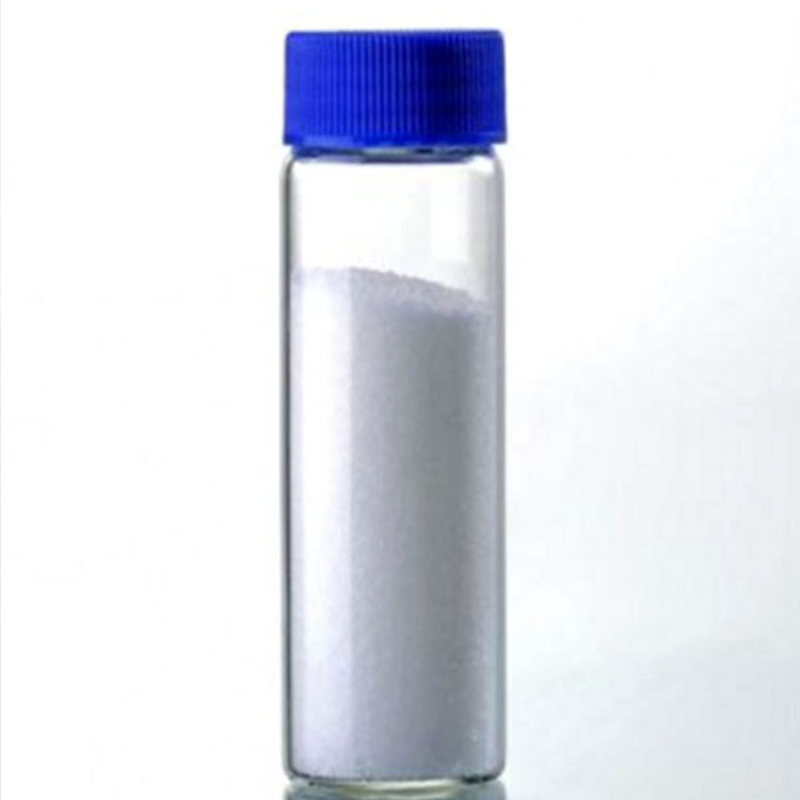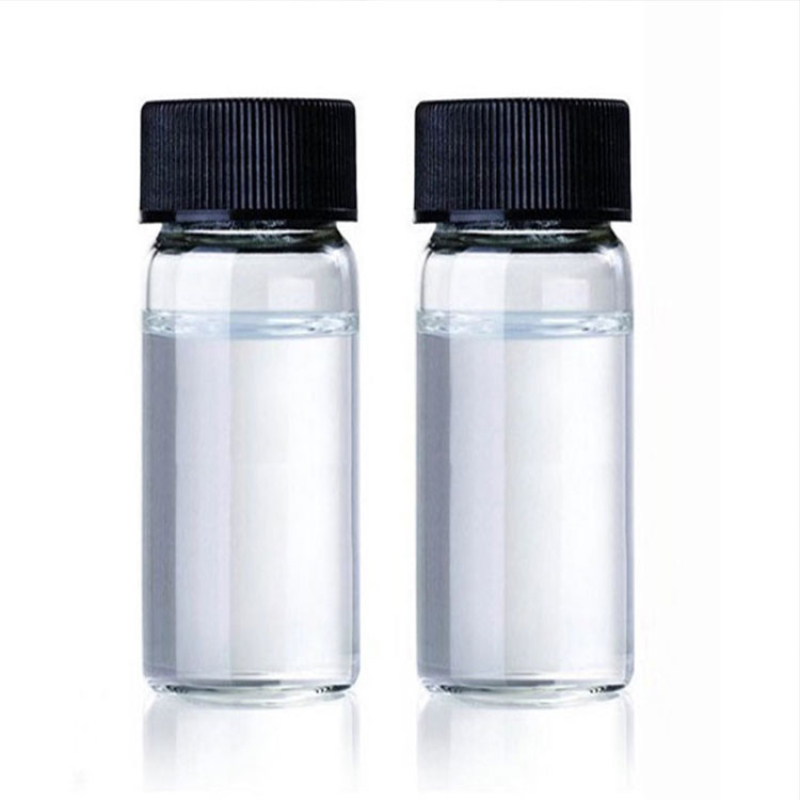Products Description of Dibenzoylmethane CAS#120-46-71,3-diphenyl-1,3-propanedione is commonly known as dibenzoylmethane.
Contact Now
Products Description of Benzylamine CAS#100-46-9Benzylamine, also known as benzylamine, is an organic compound with the chemical formula C7H9N.
Contact Now
Products Description of Imidazolidinyl urea CAS#39236-46-9White flowing powder, hygroscopic, odorless or with a slight characteristic odor, easily soluble in water, soluble in propylene glycol and glycerin, and hardly soluble in ethanol.Imidazolidinyl urea Chemical PropertiesMelting point 141-143℃Boiling point 514.04°C (rough estimate)density 1.4245 (rough estimate)vapor pressure 0Pa at 25℃refractive index 1.6910 (estimate)storage temp. 2-8°Csolubility Soluble in water and in glycerol, but insoluble in almost all organic solvents.pka7.41±0.10(Predicted)f
Contact Now
Products Description of 1-Methylpyrrolidine CAS#120-94-5Colorless, transparent, volatile liquid. Freezing point -90°C, boiling point 79.5~80.5°C, relative density 0.819, refractive index 1.4240, flash point -21°C.
Contact Now
Products Description of 2-Imidazolidone CAS#120-93-42-Imidazolidinone is an organic compound with the molecular formula C3H6N2O.
Contact Now
Products Description of 5-Bromothiophenesulfonyl Chloride CAS#55854-46-15-Bromothiophene-2-sulfonyl chloride is an organic compound.5-Bromothiophenesulfonyl Chloride Chemical PropertiesMelting point 40-44 °C (lit.)Boiling point 100-102 °C/0.5 mmHg (lit.)density 1.985±0.06 g/cm3(Predicted)Fp >230 °Fstorage temp. Keep in dark place,Inert atmosphere,Store in freezer, under -20°Cform crystalline powdercolor Off-white/ faint lemonSensitive Moisture SensitiveCAS DataBase Reference55854-46-1(CAS DataBase Reference)Safety InformationHazard Cod
Contact Now
Products Description of Naphthalene-2-sulfonic acid CAS#120-18-3White to slightly brown leaf-shaped crystals. Melting point 91℃ (anhydrous), 83℃ (trihydrate), 124℃ (monohydrate). Soluble in water, alcohol and ether.
Contact Now
Products Description of Dimethyl terephthalate CAS#120-61-6Dimethyl terephthalate (DMT) is a key precursor in the production of polyethylene terephthalate (PET), widely recognized for its applications in the manufacturing of plastic bottles, fibers, and films. In academic and industrial R&D, DMT is the subject of innovative research, such as its hydrogenation to dimethyl cyclohexanedicarboxylates (DMCD) using bimetallic catalysts, which has demonstrated an 80% conversion rate and 95% selectivity under optimized conditions 43.
Contact Now
Products Description of 1-(4-Chlorophenyl)Piperazine Dihydrochloride CAS#38869-46-4Para-Chlorophenylpiperazine (pCPP) is a psychoactive drug of the phenylpiperazine class. It is relatively obscure, with limited human use, and produces slightly psychedelic effects.
Contact Now
Products Description of BIS(2-Methacryloxyethyl)phosphate CAS#32435-46-4 BIS(2-METHACRYLOXYETHYL) PHOSPHATE Chemical PropertiesBoiling point 221 °C(lit.)density 1.28 g/mL at 25 °C(lit.)refractive index n20/D 1.47(lit.)Fp >230 °Fstorage temp. 2-8°Cpka1.29±0.50(Predicted)EPA Substance Registry System2-Propenoic acid, 2-methyl-, phosphinicobis(oxy-2,1-ethanediyl) ester (32435-46-4)Safety InformationHazard Codes XiRisk Statements 36/37/38Safety Statements 26-36WGK Germany 3HS Code 29199000Product Applicati
Contact Now
Products Description of Diethylene glycol CAS#111-46-6Diethylene glycol (DEG) is a multifaceted compound with a pivotal role in pharmaceuticals, cosmetics, and textiles. Our firm boasts a robust track record of international collaboration, supplying DEG for applications from liquid medications to skincare formulations and advanced textile dyeing processes. Our R&D arm, in synergy with academic excellence, propels innovation, ensuring our DEG consistently exceeds purity benchmarks, typically at ≥99.9%.
Contact Now
BIS(2-METHACRYLOXYETHYL) PHOSPHATE Chemical PropertiesBoiling point 221 °C(lit.)density 1.28 g/mL at 25 °C(lit.)refractive index n20/D 1.47(lit.)Fp >230 °Fstorage temp. 2-8°Cpka1.29±0.50(Predicted)EPA Substance Registry System2-Propenoic acid, 2-methyl-, phosphinicobis(oxy-2,1-ethanediyl) ester (32435-46-4)Safety InformationHazard Codes XiRisk Statements 36/37/38Safety Statements 26-36WGK Germany 3HS Code 29199000Product Application of BIS(2-METHACRYLOXYETHYL) PHOSPHATE CAS#32435-46-4 Used in resin and
Contact Now
Products Description of 4-tert-Amylphenol CAS#80-46-64-tert-Amylphenol is an organic compound characterized by a phenolic structure with a tert-amyl (4-methyl-2-pentyl) group attached to the para position of the benzene ring. It is used in various applications, including as a stabilizer in polymers and as an intermediate in the synthesis of other organic compounds.
Contact Now
Products Description of ISOQUINOLINE-5-CARBALDEHYDE CAS#80278-67-7ISOQUINOLINE-5-CARBALDEHYDE is a white powder crystal.ISOQUINOLINE-5-CARBALDEHYDE Chemical PropertiesMelting point 116-120 °CBoiling point 331.7±15.0 °C(Predicted)density 1.223±0.06 g/cm3(Predicted)storage temp. Keep in dark place,Sealed in dry,Room Temperatureform powder to crystalpka4.53±0.13(Predicted)color White to Light yellowSensitive Air SensitiveBRN 112875CAS DataBase Reference80278-67-7(CAS DataBase Reference)Safety InformationHazard Codes XnRisk Statements 36/37/38
Contact Now
Products Description of ASTRAZON PINK FG CAS#3648-36-0Dark red uniform powder. Dissolves in water to produce bright pink. When dyed at high temperature (120℃), the color does not change. If dyed in sulfuric acid bath, the color changes slightly, and when dyed in formic acid bath, the color does not change. Light fastness level 4.
Contact Now
Diethylene glycol CAS#111-46-6Diethylene glycol is a clear colorless, odorless and steady oily liquid. It is additionally barely viscous, noncorrosive and nonvolatile. Because of its ether and alcohol group, diethylene glycol well-knownshows chemical residences attribute of both essential alcohols and ethers. Its boiling factor is extensively greater than that of ethylene glycol, and its solvent is greater.
Contact Now
Products Description of 2,5-Dimethoxybenzaldehyde CAS#93-02-72,5-Dimethoxybenzaldehyde is a colorless crystal produced by methylation reaction with dimethyl sulfate in an alkali aqueous solution.2,5-Dimethoxybenzaldehyde Chemical PropertiesMelting point 46-48 °C (lit.)Boiling point 146 °C/10 mmHg (lit.)density 1.1708 (rough estimate)refractive index 1.5260 (estimate)Fp >230 °Fstorage temp. Keep in dark place,Sealed in dry,Room Temperaturesolubility 795mg/lform Crystalline Powder, Crystals and/or Chunkscolor Yellow to beigeWater Solubili
Contact Now
Products Description of Melamine-phosphate CAS#41583-09-9White powderMelamine-phosphate Chemical PropertiesMelting point 120 - 122°Cdensity 1.74storage temp. Refrigeratorsolubility DMSO (Slightly), Methanol (Slightly)form Solidcolor WhiteWater Solubility 3.9g/L at 20℃EPA Substance Registry System1,3,5-Triazine-2,4,6-triamine, phosphate (41583-09-9)Factory and Equipment ShowFast delivery timeInventory 2-3 working days New production 7-10 working days
Contact Now
Products Description of Sodium Hydroxymethanesulphinate CAS#149-44-0Sodium bisulfite formaldehyde is translucent white orthorhombic crystals or small pieces. Apparent density 1.80~1.85g/cm3. Easily soluble in water, slightly soluble in alcohol. It has extremely strong reducing properties under high temperature and can make the dyed color disappear, so it is known as the chemical book of hanging white blocks. It decomposes when exposed to acid, and decomposes at 120°C to produce toxic gases such as formaldehyde and hydrogen sulfide.
Contact Now
Products Description of Aminopyrazine CAS#5049-61-6Aminopyrazine is the matrix for the four-component synthesis of imidazolidinediones, an organic synthesis intermediate and a pharmaceutical intermediat.Aminopyrazine Chemical PropertiesMelting point 118-120 °C (lit.)Boiling point 167.6°C (rough estimate)density 1.1031 (rough estimate)refractive index 1.5200 (estimate)storage temp. Keep in dark place,Inert atmosphere,Room temperaturesolubility soluble in Methanolpka3.22±0.10(Predicted)form Crystalline Powdercolor Slightly yellow to beigeWater Solubil
Contact Now
Products Description of Diphenylacetonitrile CAS#86-29-3The molecular formula of diphenyl acetonitrile is C14H11N, and its melting point is 71-73°C. Boiling point 181 °C (12 mmHg). Flash point 120 °C. WATER SOLUBLE INSOLUBLE. Used as intermediates in organic synthesis.
Contact Now
Products Description of 7-Bromoisoquinoline CAS#58794-09-5Quinoline and isoquinoline are important components of antibacterial drugs.
Contact Now
Products Description of 7-Methylquinoline CAS#612-60-27-Methylquinoline can be used as a pharmaceutical and pesticide intermediate7-Methylquinoline Chemical PropertiesMelting point 35-37 °C(lit.)Boiling point 258 °C(lit.)density 1.061refractive index 1.6070 to 1.6210Fp >230 °Fstorage temp. Room Temperaturesolubility Chloroform (Slightly), Methanol (Slightly)pka5.44±0.14(Predicted)form Viscous Liquidcolor Off-White to Pale Beige Low-MeltingWater Solubility <0.1 g/100 mL at 20 ºCBRN 110317Stability:Stable.
Contact Now
Products Description of Sodium xylenesulfonate CAS#1300-72-7Sodium xylene sulfonate is a white or light yellow liquid, a surfactant, soluble in water, with a pH of 7.0 for 1% solution and a viscosity of mPa·s10[7]; 2.7 mm2/s at 20°C. It is mainly used as a coupling agent, solubilizer, turbidity point depressant, detergent aid, dispersant, emulsifier, hydrotrope, and viscosity regulator.
Contact Now


































